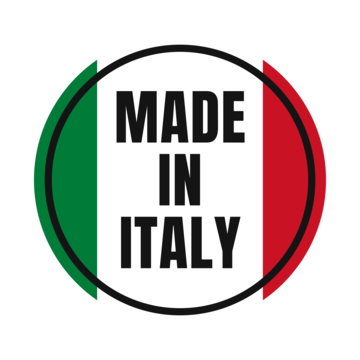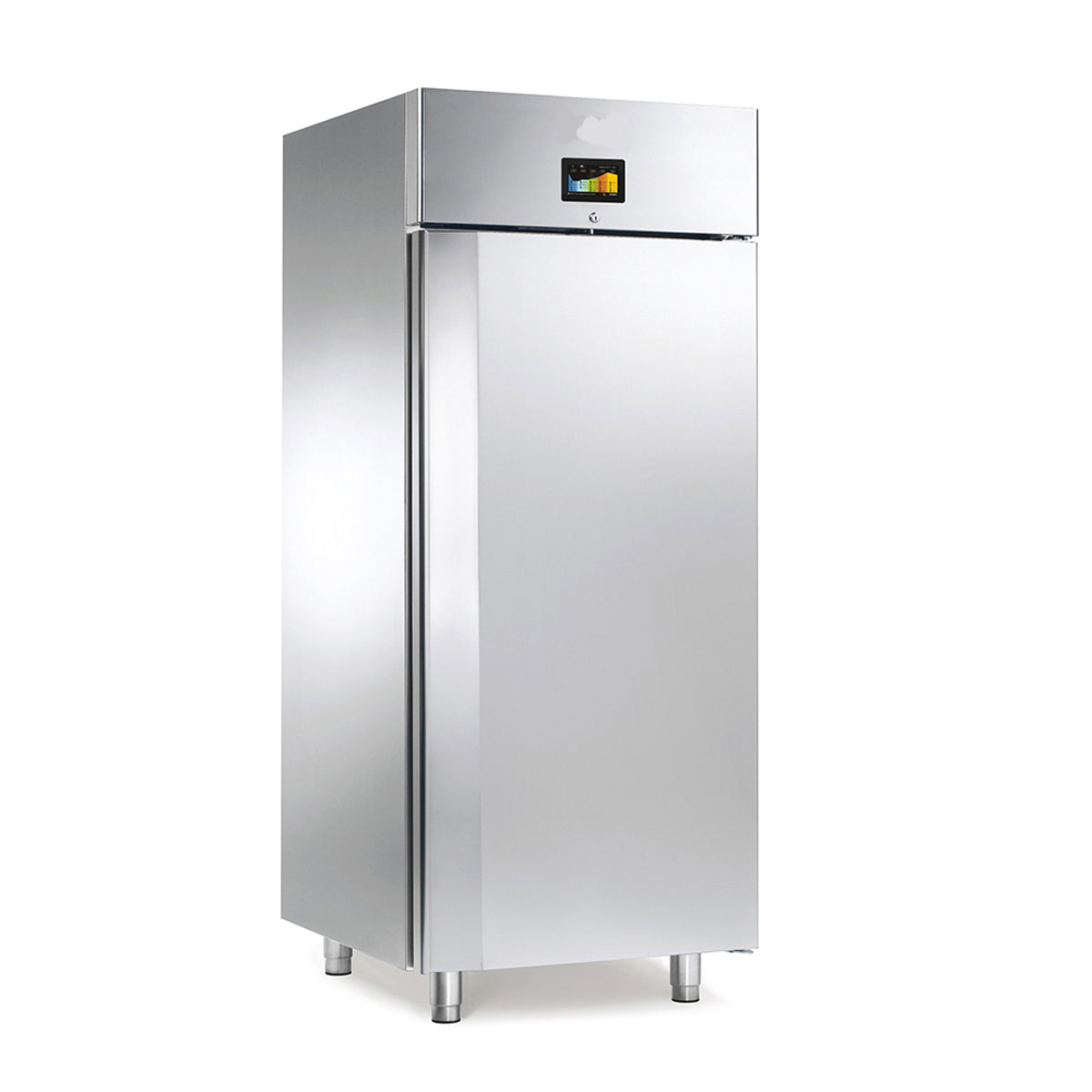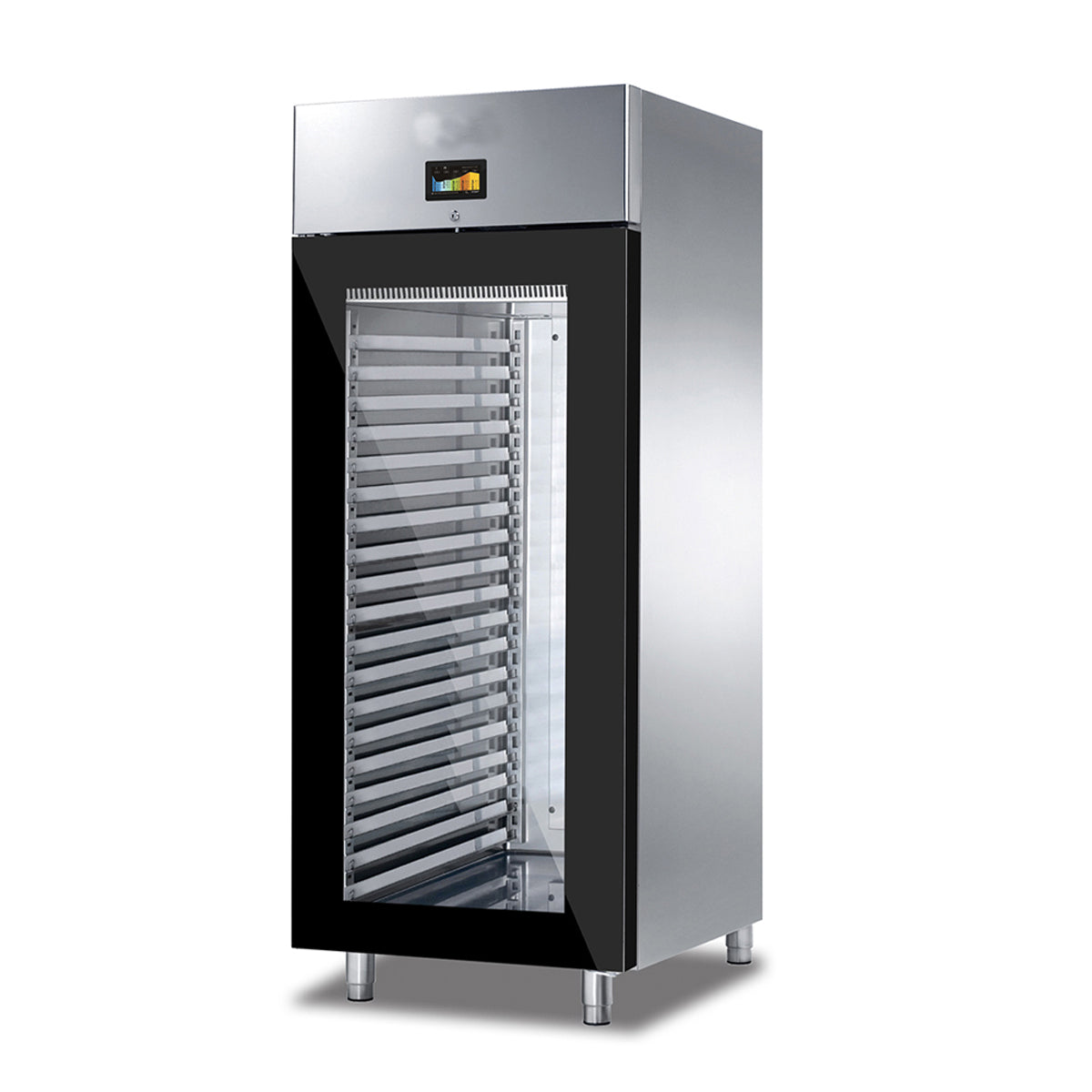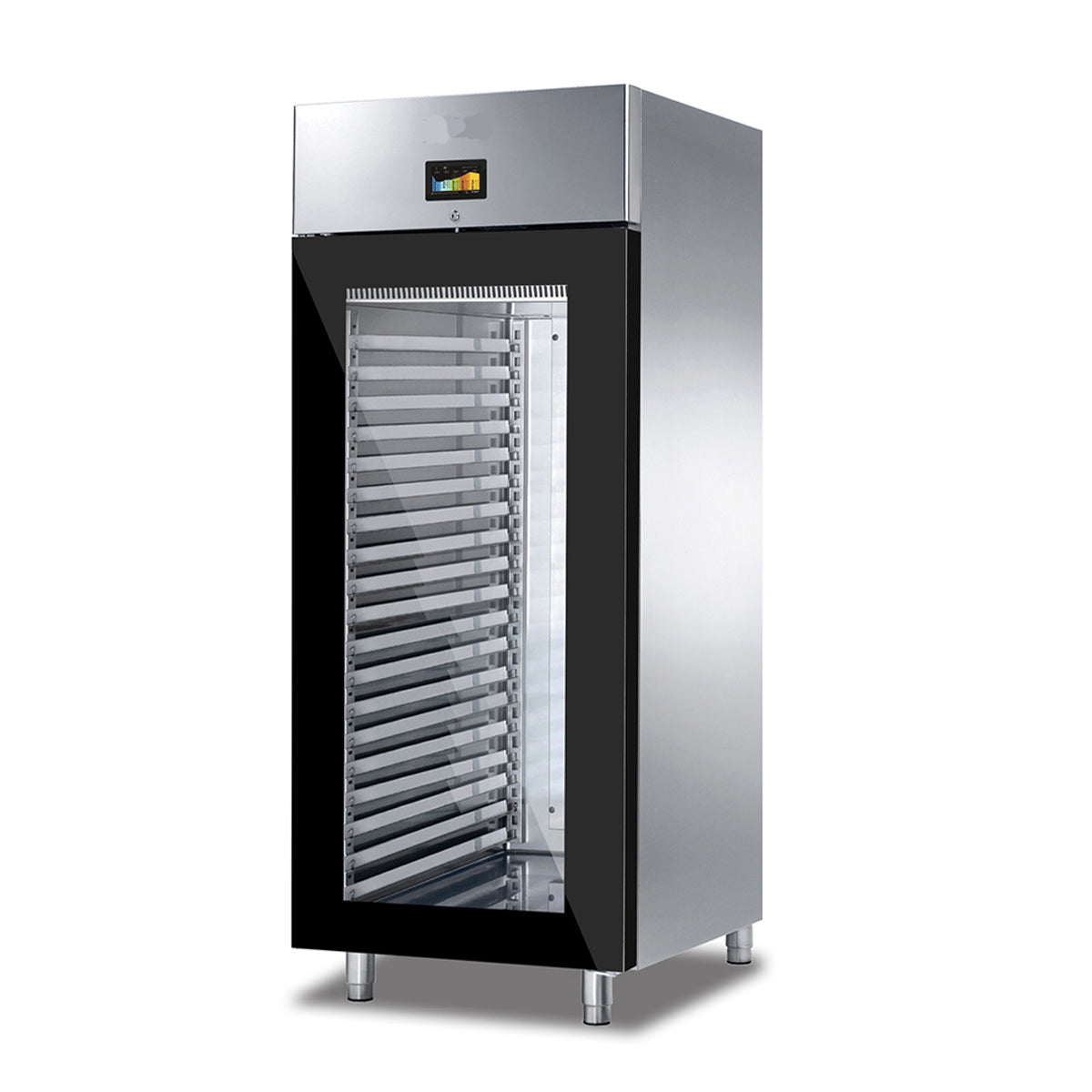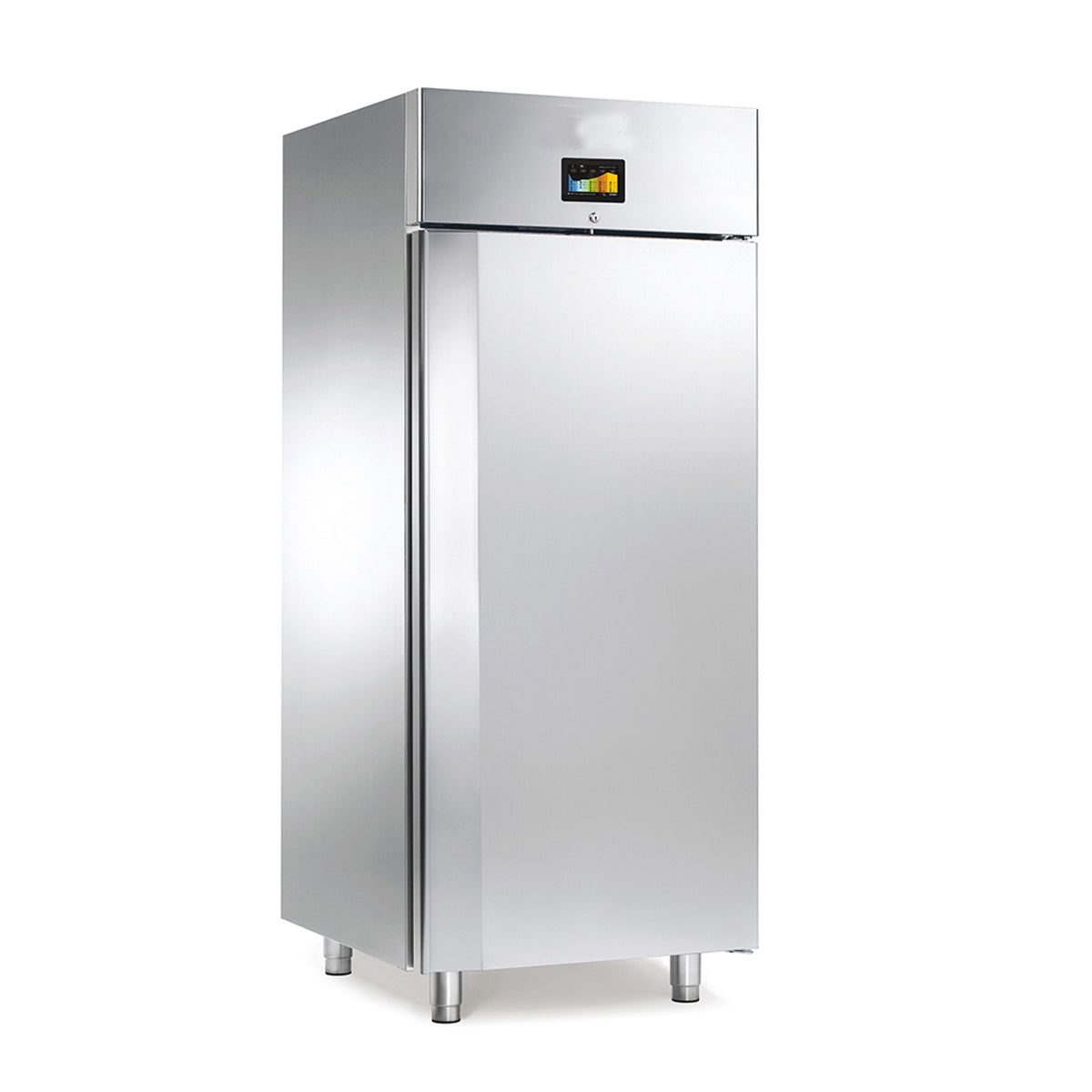The retarder proofer cabinet represents among the bakery equipement a step forward in technology, offering innovative solutions that improve the efficiency of the production process.
Thanks to its control panel, the retarder-proving cabinet allows you to automatically but promptly manage the entire dough retarder-leaving cycle. This panel has a 3.5" color capacitive panel and a menu in 5 languages. This professional proofer design is ergonomic and functional and allows quick control even during the entire stop-leaving phase.
By allowing you to control the temperature, humidity and leavening time, this technology improves the quality of the bread making, becoming an extraordinary ally for all professionals in the sector.
Features of the retarder-prover cabinet
- Construction entirely in AISI 304 stainless steel.
- Interior with rounded edges and printed bottom.
- 60 mm insulation in ecological water-foamed polyurethane.
- Internal setup for Euronorm 60×40 and 60×80 trays.
- Easily removable supports for guides with a pitch of 35 mm.
- Ventilated refrigeration unit.
- Electronic control panel.
- Active humidity regulation up to 95%.
- Max working ambient temperature +38°C.
- Refrigerant gas R452A.
- Automatic evaporation of condensate.
- Interior lighting.
- Locking with key.
- Self-closing doors with easily replaceable magnetic seals.
- Height-adjustable stainless steel feet (130-185 mm).
